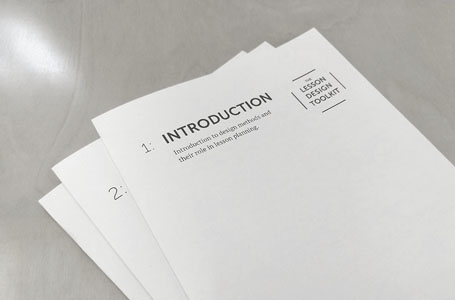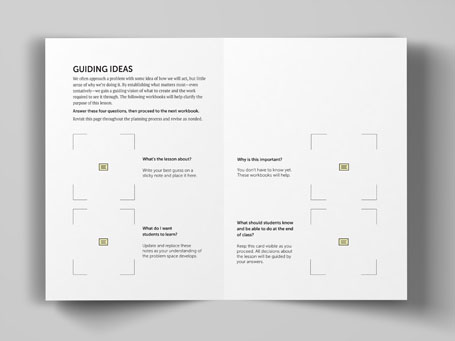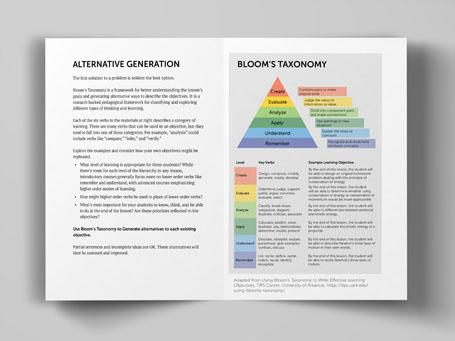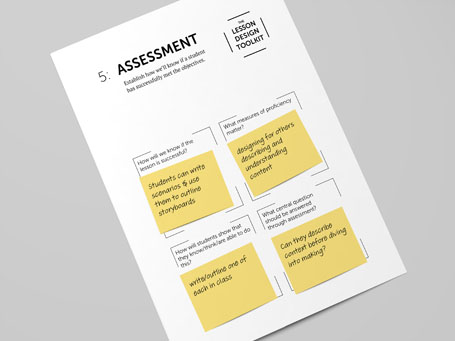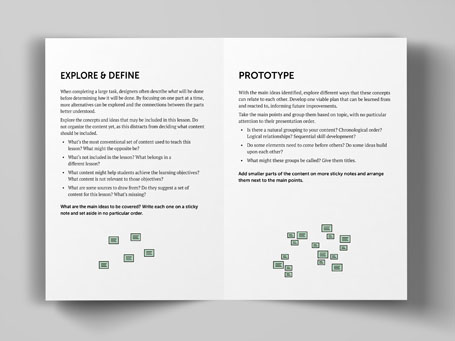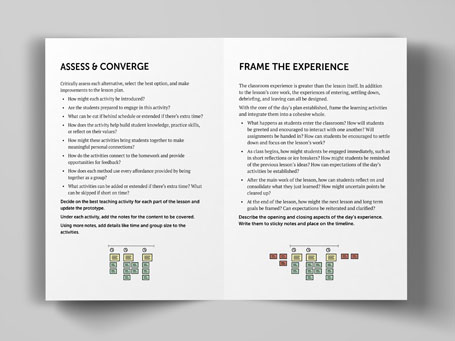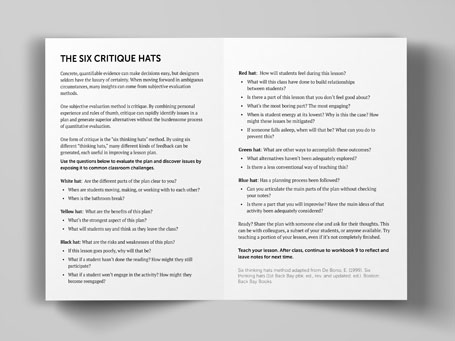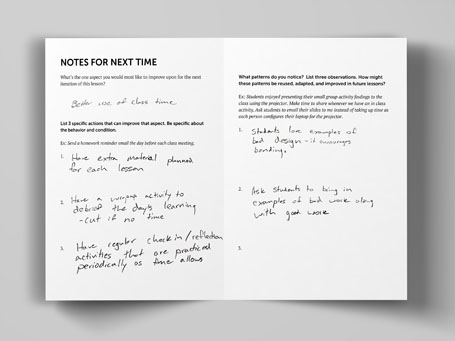The Toolkit
This thesis work asks how design can be helpful in the context of education, better facilitating the lesson design process for early-career educators.
Because most college educators aren’t formally taught how to teach, they often lack the processes and methods to effectively design classroom experiences. Designers face similar problems, but have well developed processes and methods for moving forward while building intuition. Lesson planning is a form of experience design, but it’s not approached as such. This Toolkit helps early-career college educators effectively design lessons without the benefit of extensive experience.
The Lesson Design Toolkit is a series of workbooks that help early-career college educators navigate the process of creating a lesson. As each workbook guides the way, it introduces teaching theory and design methods that are helpful in an aspect of lesson design. This approach shows how design methods can be applied to the design of designed experiences.

A thesis project by Matt Imus in the Master of Design program at the University of Washington.
mattimus.net
matt@mattimus.net
Facilitates the Creative Process in Teaching
- Separates strategic aspects of lesson planning from the distractions of implementation, allowing each component of the lesson to be thoroughly considered.
- Generative methods to get unstuck, create many alternatives, and identify the most effective teaching practices for the lesson.
Supports Early-Career College Educators
- Provides a structure to break down overwhelming tasks into manageable components.
- Introduces teaching theory and techniques that many educators are never formally introduced to.
- Cultivates a reflective, iterative teaching practice that enables future improvement.
Built On Evidence-Based Teaching Practices
- Incorporates time tested, mainstream teaching methodologies like Bloom's Taxonomy and Backwards Design.
- Situates established education practices within a designerly creative process.
Preserves Autonomy and Personal Preference
- Supports educators as they establish their practice, yet preserves autonomy and flexibility.
- Rather than imposing a strict structure, the workbooks suggest a design process that can then be adapted as the individual educator sees fit.
- After internalizing these design methods, educators may choose to shorten the process and use only some parts of the toolkit.
